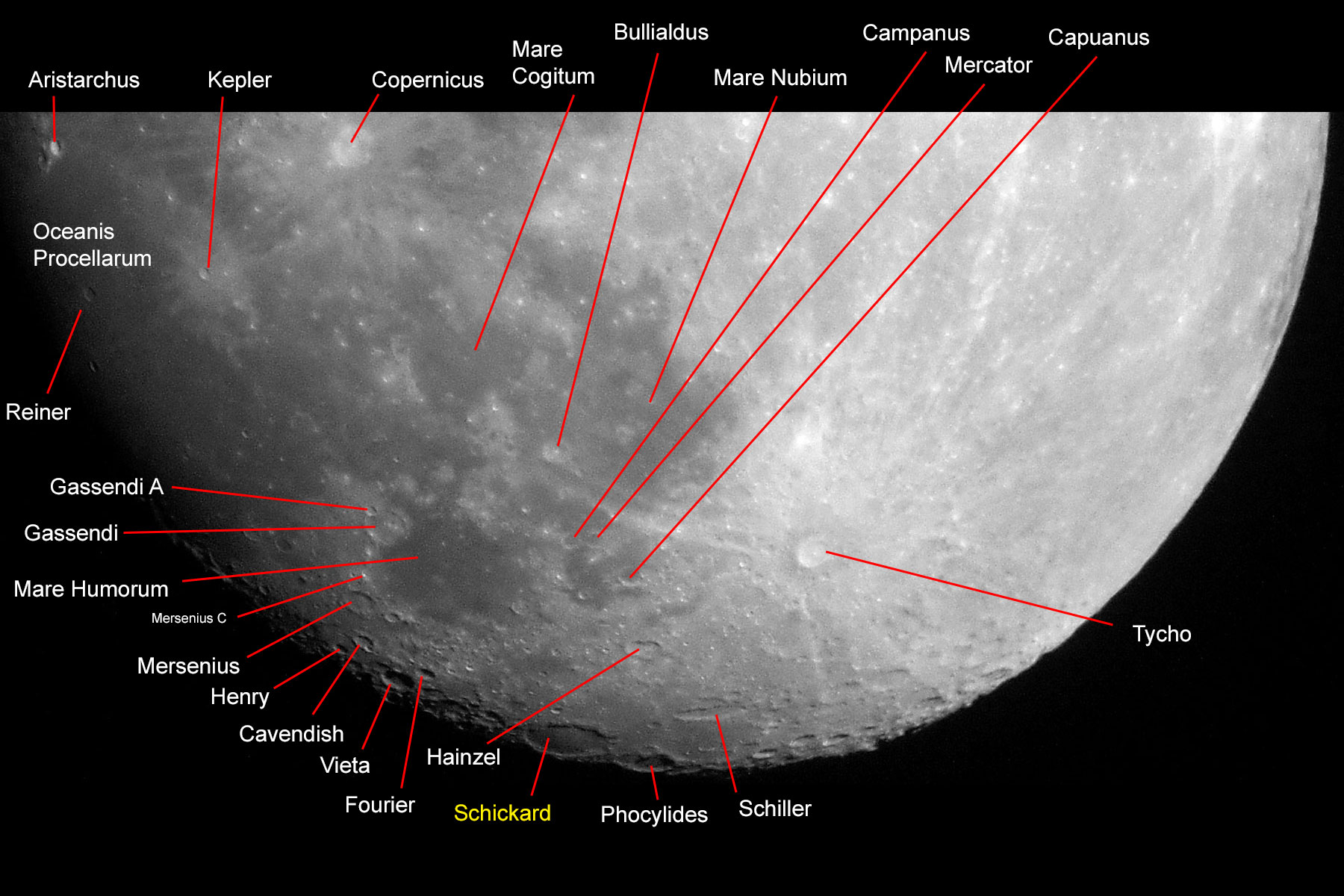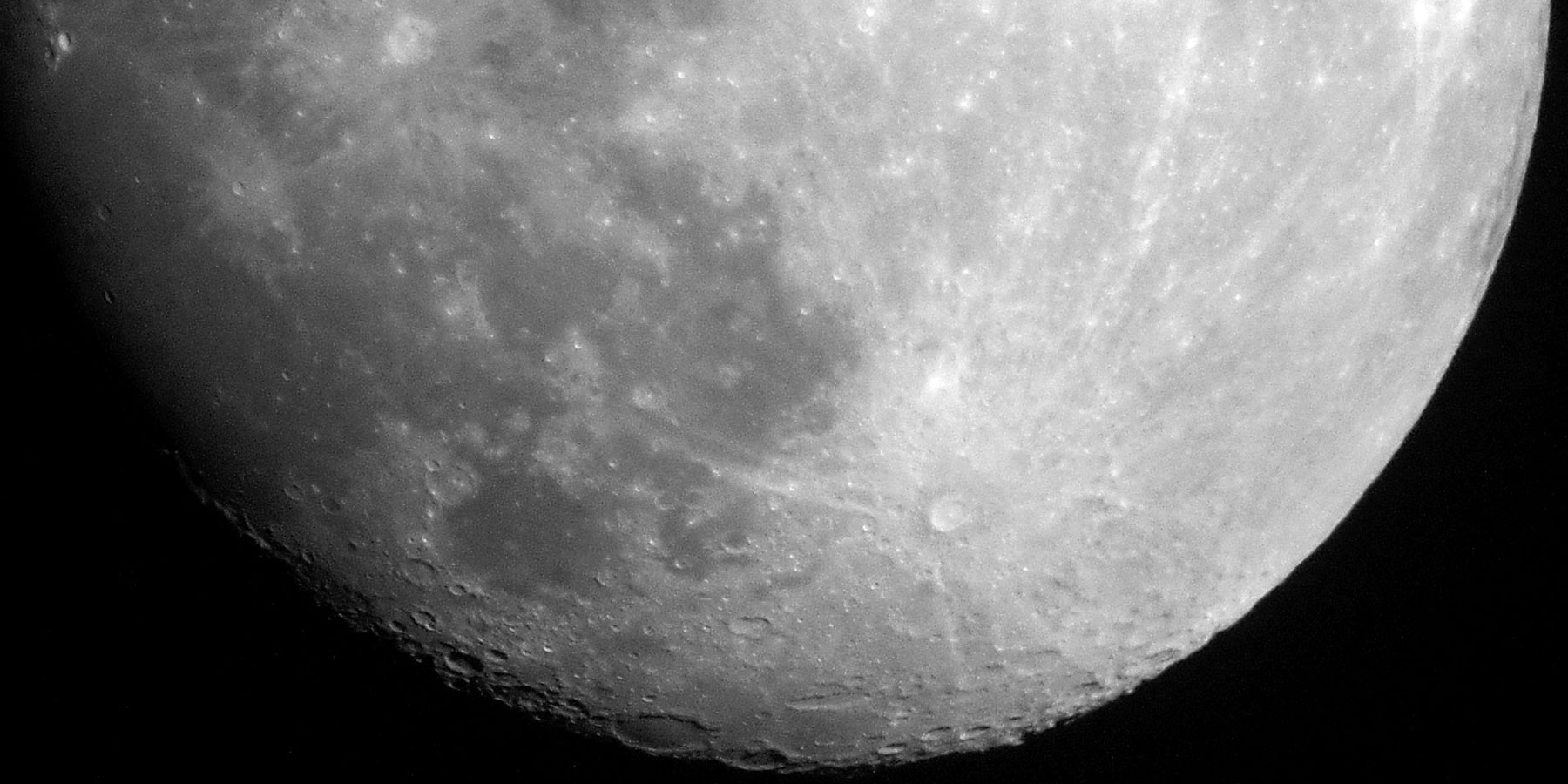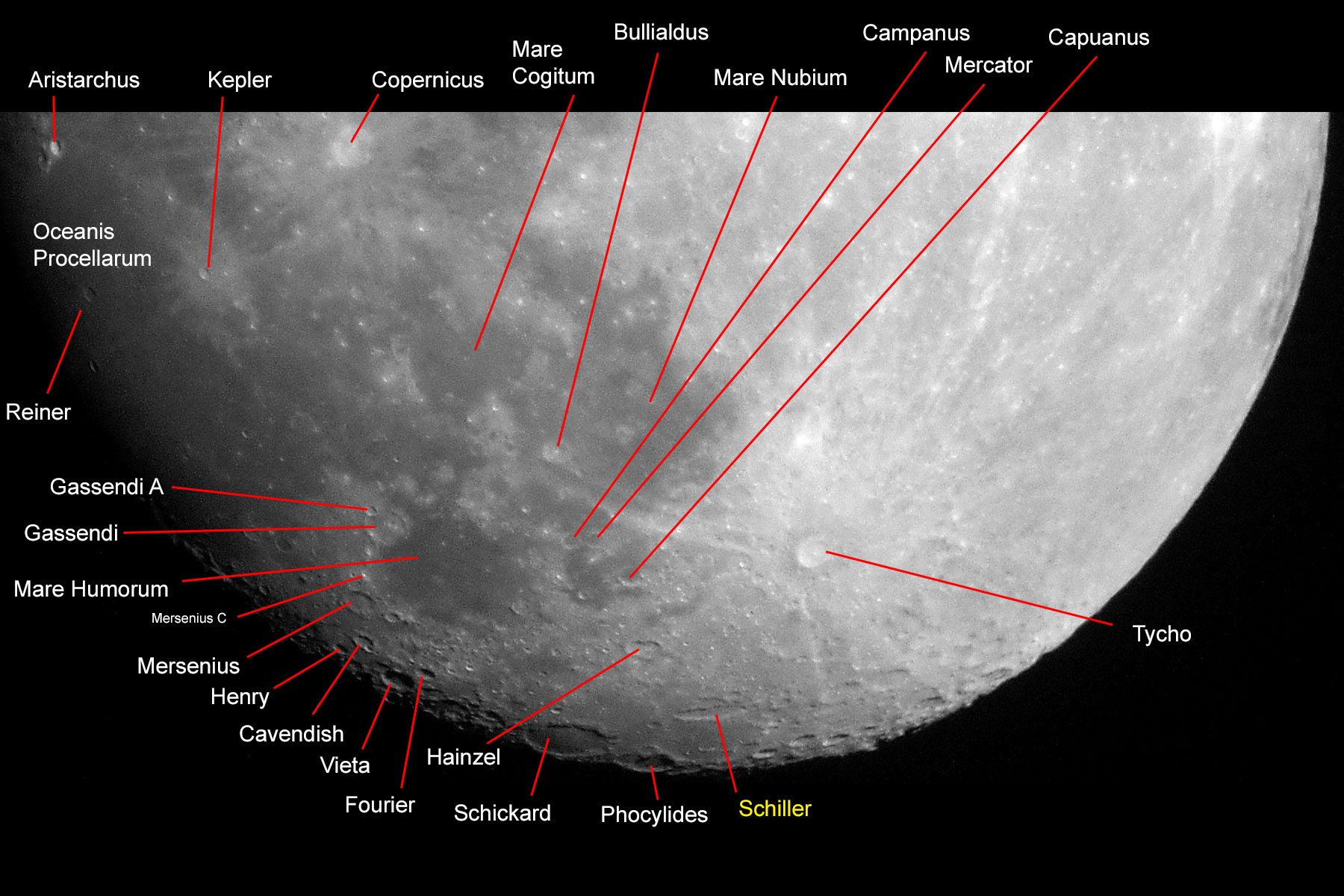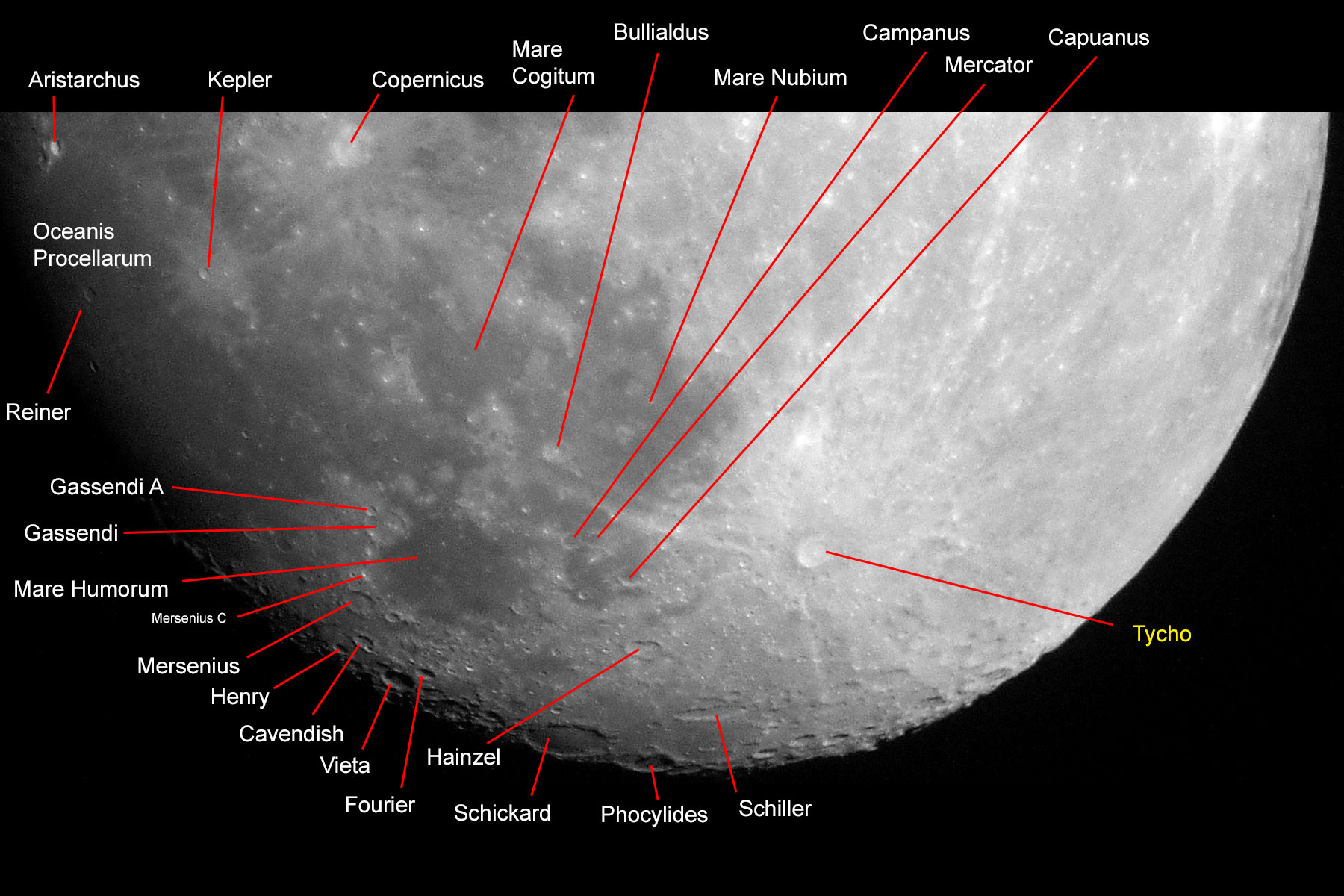Moon Alphabet - S-Z
Introduction | S | T | U | V | W | X | Y | Z | References
On these pages I do "moon walks" on the basis of my own photos. In other words, I try to name the objects on my lunar photos to get to know the moon better. Maybe these pages will help others to get to know the moon better as well...
On this and further pages, I present selected surface elements (maria, craters, mountains) on the moon, or combinations of these in alphabetical order, thus, as a small "moon encyclopedia." Some of the photos are repeated because they contain several interesting objects; the current objects are labelled in yellow. The photos are rotated by 180 degrees or mirrored so that they correspond to the normal visual impression, but they are often somewhat skewed. I hope to be able to replace some photos with better ones in the course of time...
Notes
- The initial selection of objects was guided by Lambert Spix' book "moonscout," but probably more elements will be added some day...
- The description of the general elements of the moon surface can be found on page Walking the Moon with my own Photos - Overview.
- See also pages Moon Alphabet - A-C, Moon Alphabet - D-J, Moon Alphabet - K-R - Back to the overview of my "moon walks".
Sources
- Spix = Lambert Spix (2013, 3. Auflage). moonscout - Mondmeere, Krater und Gebirge einfach finden und beobachten
- S&G = Lambert Spix & Frank Gasparini (2011, 1. Auflage). Der Moonhopper
- VMA = Virtual Moon Atlas
For more information see the references.
Introduction
On this and further pages, I present landscapes on the moon, surface elements (maria, craters, mountains), or combinations of these in alphabetical order, thus, as a small "moon encyclopedia."
S
Schickard
Walled plain (large crater) with a diameter of 202 km and a depth of 3000 m (Spix; 227 km according to VMA). Located at the south-west edge of the moon.
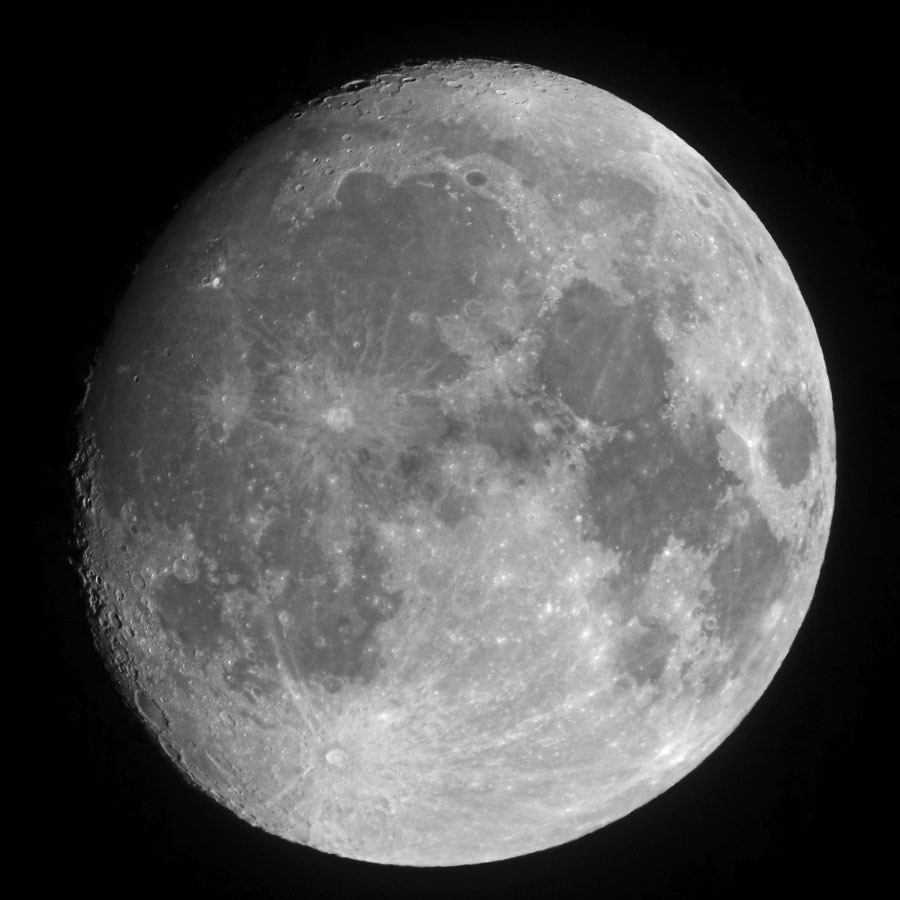 |
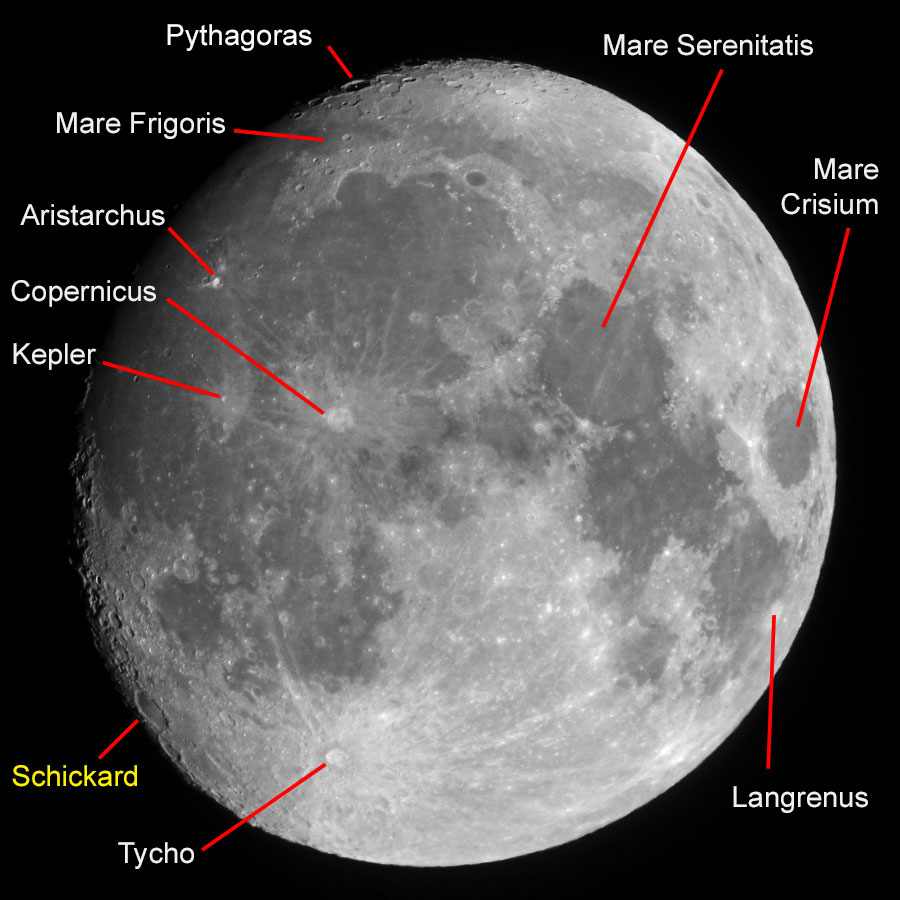 |
|
 |
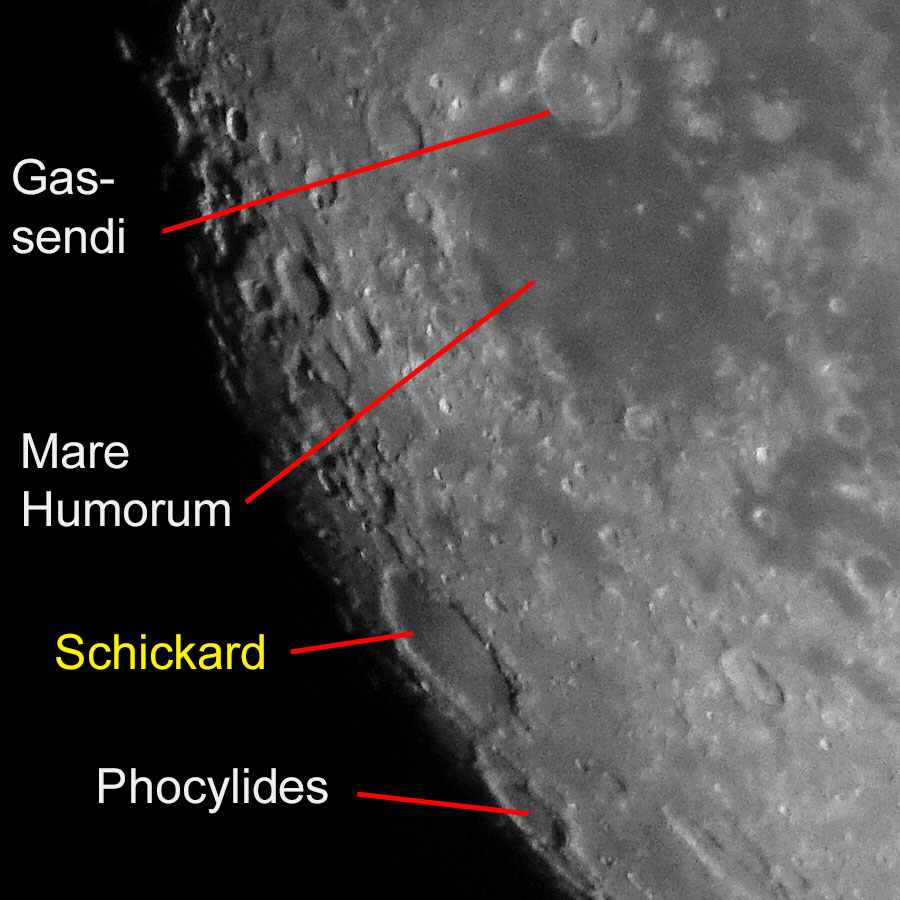 |
Photo data: November 20, 2018, Omegon PS 73/432, Sony RX100 M4 attached to the 32 mm eyepiece plus 3 x focal extender
Photo data: February 27, 2018, Sky-Watcher Skymax-102 OTA, Ricoh GR held to the eyepiece (see below for a version without text)
Schiller
The crater Schiller is elongated and therefore unique on the moon (80 km wide and 180 km long) and it is 2500 m deep (Spix; 108/179 km and 3900 m high according to VMA).
Photo data: February 27, 2018, Sky-Watcher Skymax-102 OTA, Ricoh GR held to the eyepiece
 |
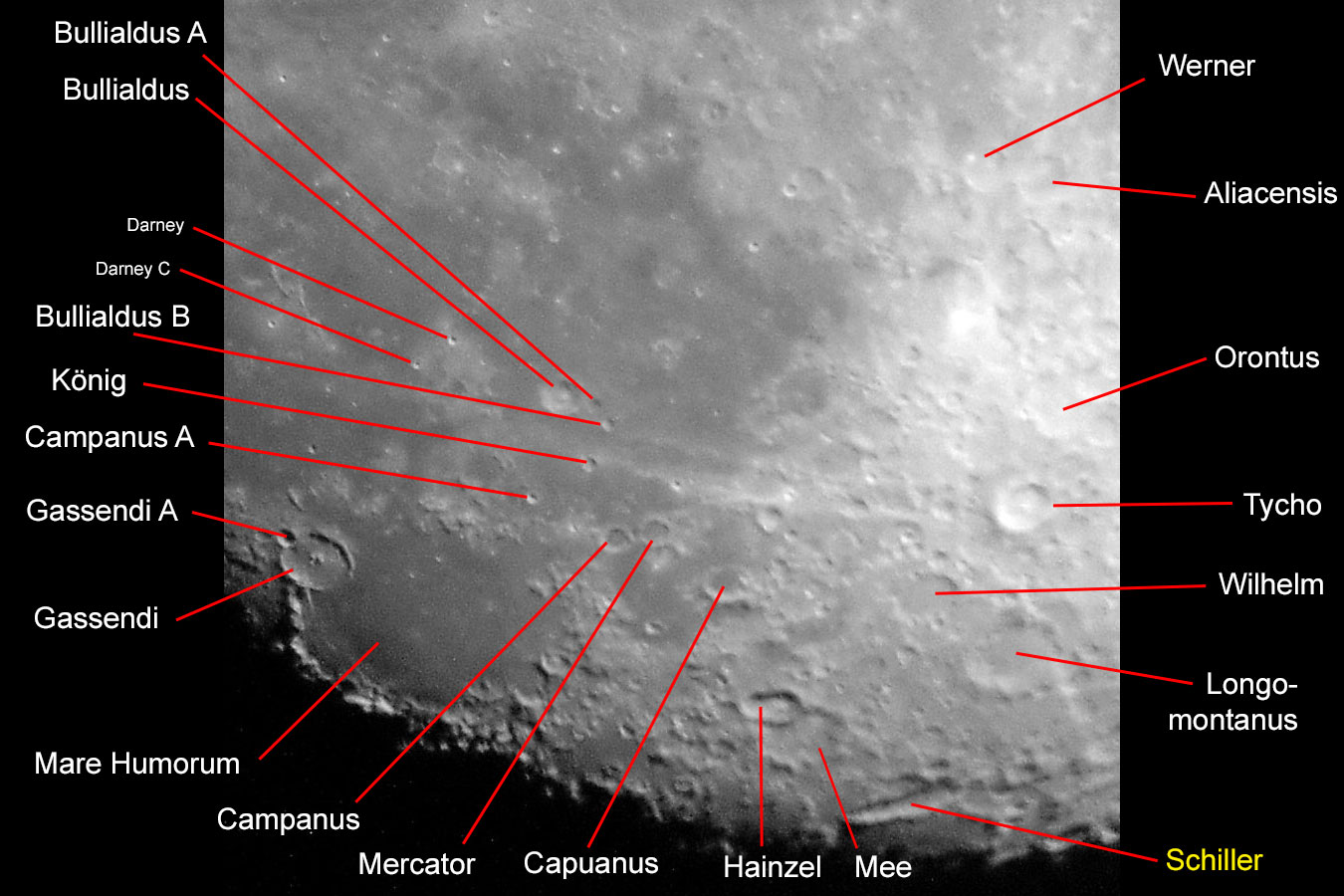 |
Photo data: February 26, 2018, Sky-Watcher Skymax-102 OTA, Ricoh GR held to the eyepiece
Schröteri, Vallis (Schröter Valley)
The bended Vallis Schröteri is the largest lava valley on the moon. It is 185 km long and 1000 m deep (Spix).
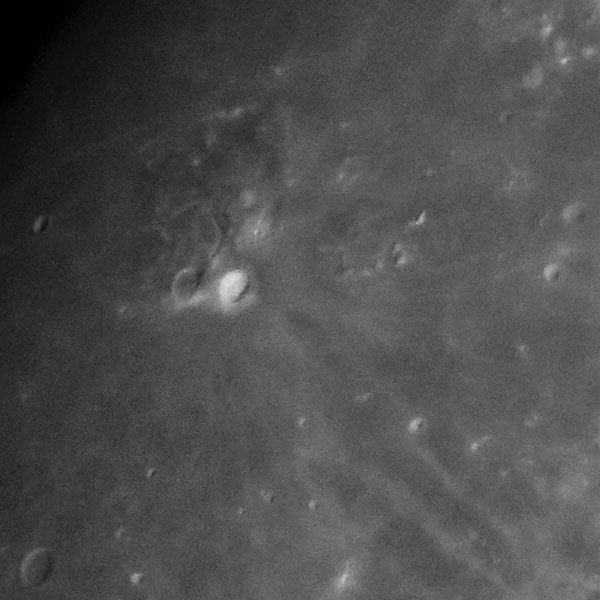 |
 |
 |
||
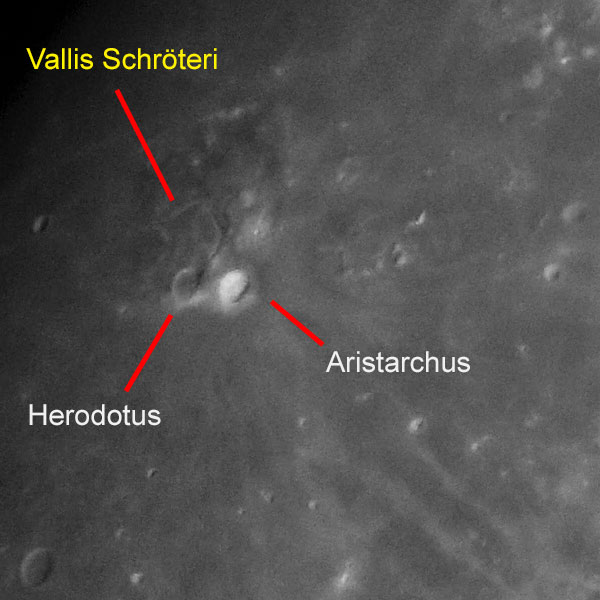 |
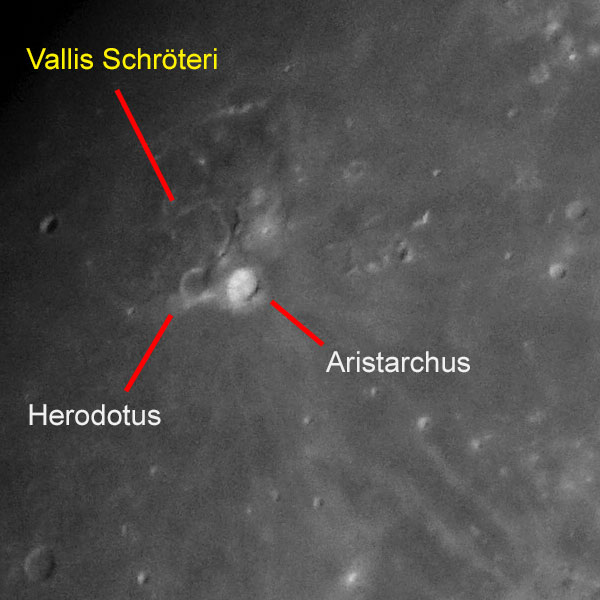 |
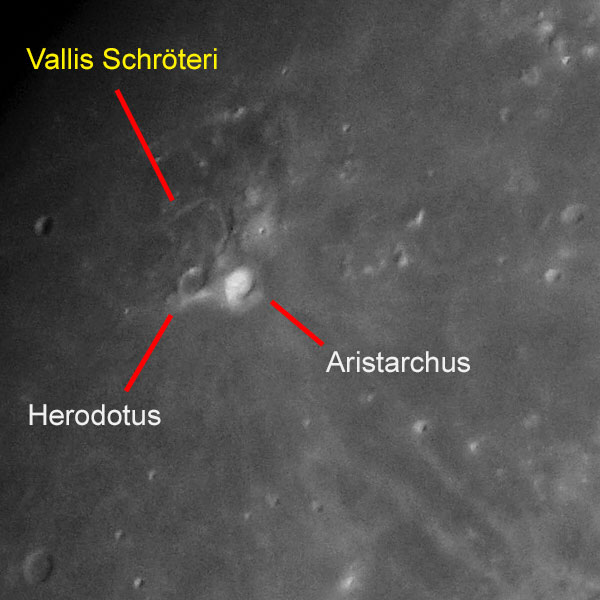 |
Photo data: November 20, 2018, Omegon PS 72/432 refractor on Sky-Watcher AZ Pronto mount, Sony RX100 M4 attached to the 32 mm eyepiece, 3 x focal extender
Serenitatis, Mare (Sea of Serenity)
Mare Serenitatis (Sea of Merriment) has a diameter of 675 km (Spix) and reminds me of a scallop - so I can recognize it easily.
 |
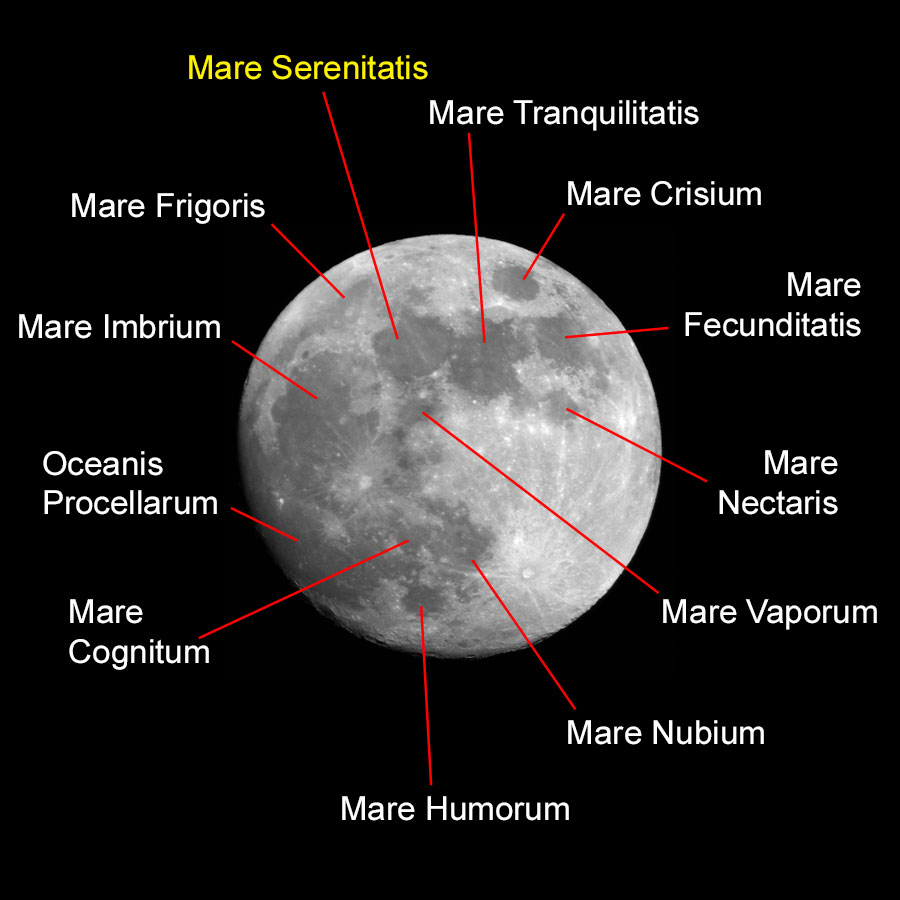 |
Photo data (left photo): March 29, 2018 (two days before Full Moon), Sky-Watcher
Skymax-127 OTA, Sony RX100 M4 attached to the 32 mm eyepiece
Photo data (right photo): February 28, 2010 (nearly Full Moon), Sky-Watcher
Skymax-127 OTA (probably), Leica X Vario (36 - 50 mm equiv.) held to a 32 mm
eyepiece (47 x)
Spitzbergen, Montes
The Montes Spitzbergen are located north of the crater Archimedes in the eastern part of the Mare Imbrium (sea of rain), are 60 km long and 1400 m high (VMA).
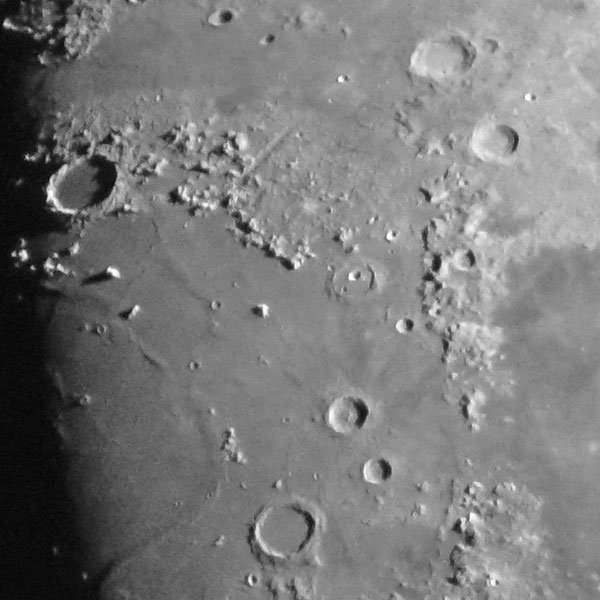 |
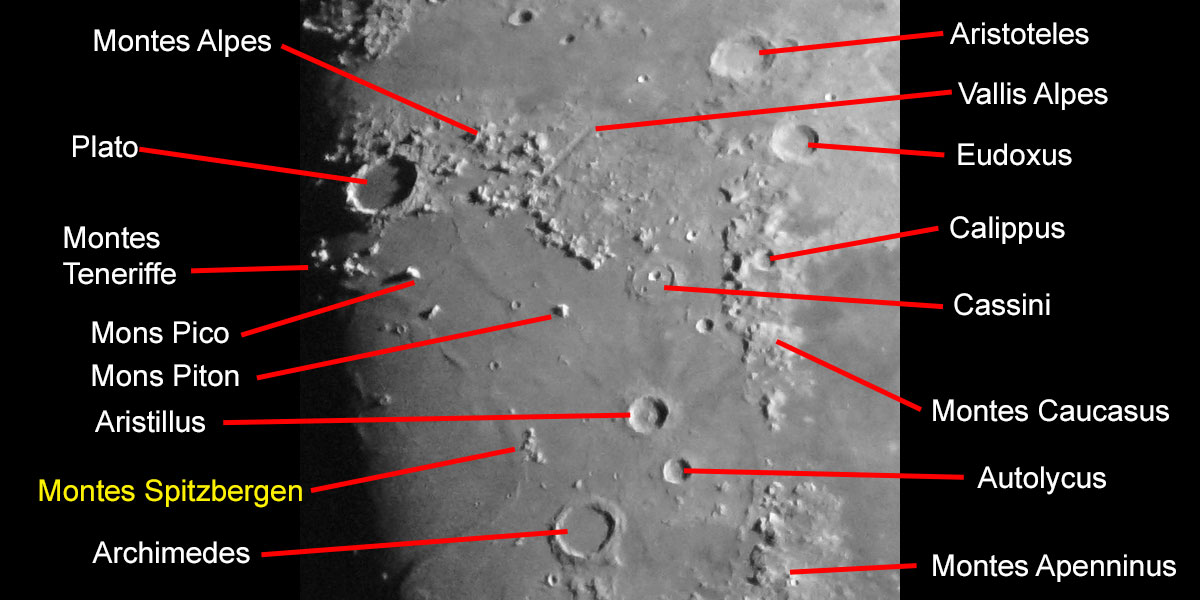 |
Photo data: March 25, 2018, Sky-Watcher Skymax-127 OTA, Sony RX100 M4 attached to the eyepiece
Stöfler
The walled plain Stöfler (large crater) has a diameter of 130 km and is 2800 m deep (Spix; 126 km according to VMA); it is located in the south of the moon (fairly far down...).
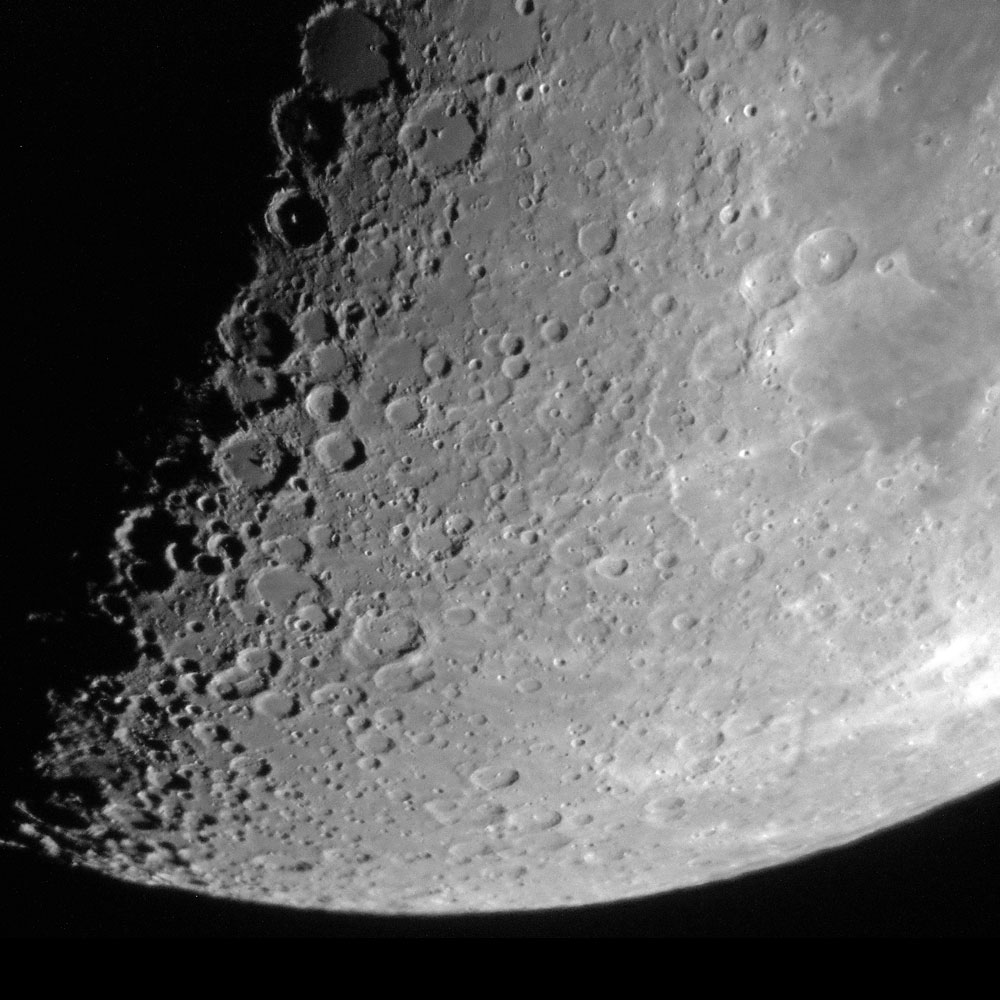 |
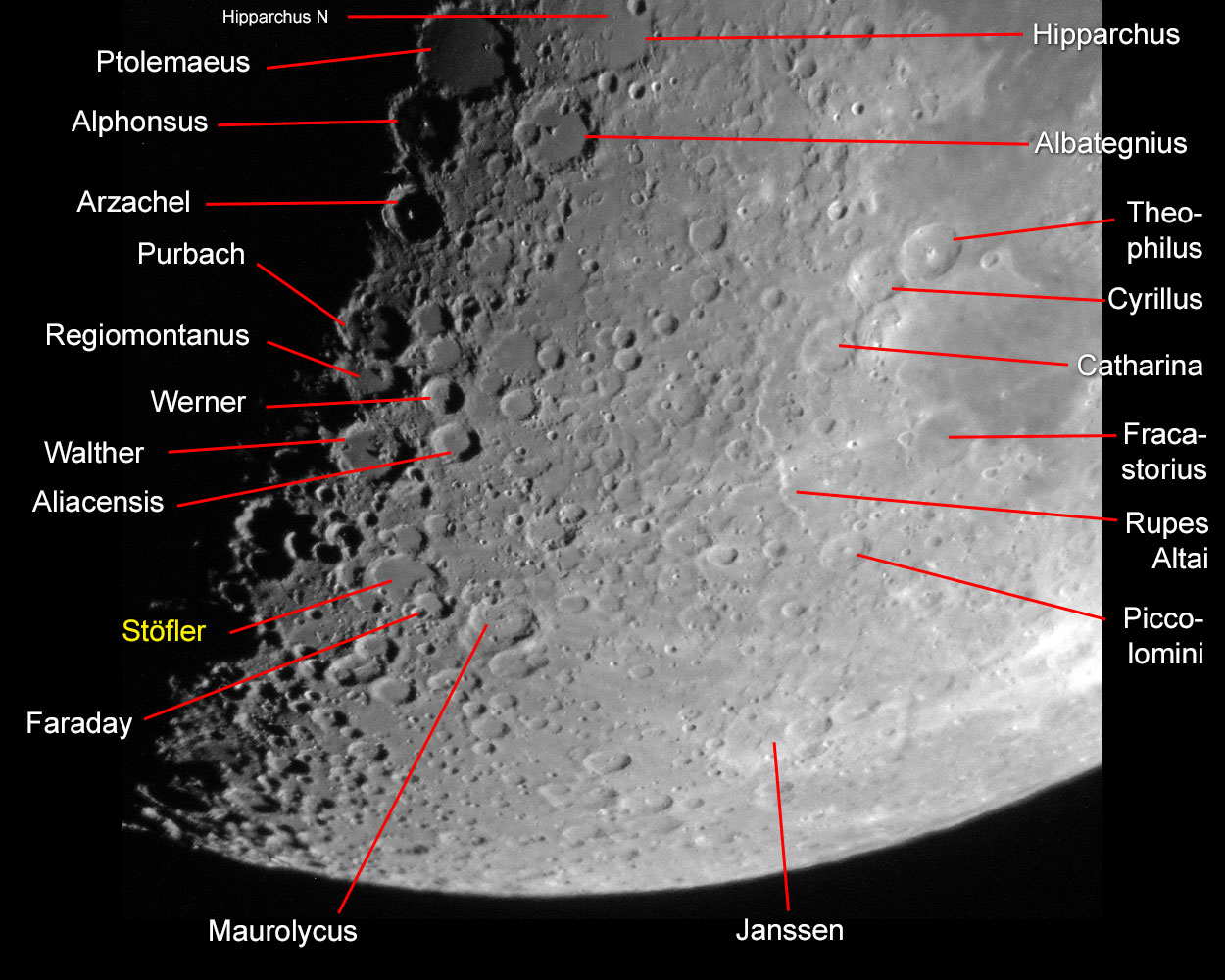 |
Photo data: March 24, 2018, Sky-Watcher Explorer 150PDS telescope, Ricoh GR held to the eyepiece
T
Teneriffe, Montes
The Montes Teneriffe (Tenerife Mountains) are located southeast of the crater Plato in the northern part of the Mare Imbrium (sea of rain), are 110 km long and 1400 m high (S&G).
 |
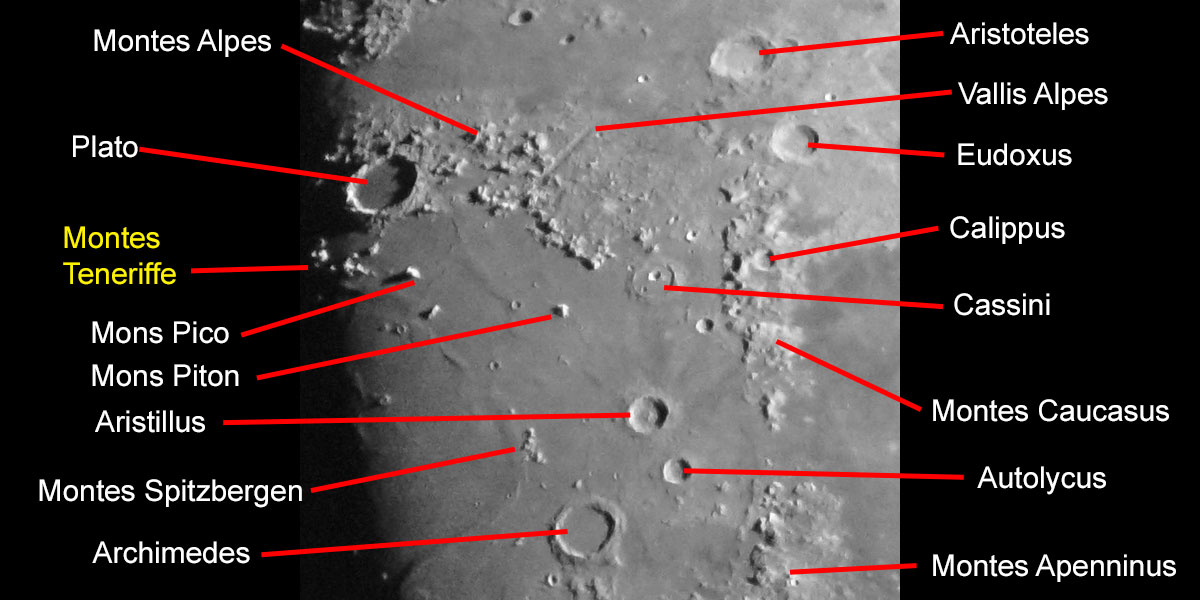 |
Photo data: March 25, 2018, Sky-Watcher Skymax-127 OTA, Sony RX100 M4 attached to the eyepiece
Thebit
The walled plain Thebit has a diameter of 57 km and is 3270 m deep (S&G) or 58 km and 3270 m (VMA). Thebit is the largest crater in a chain of three craters called Thebit, Thebit A (20 km), and Thebit L (12 km) at the eastern edge of Mare Imbrium (Sea of Rain).
 |
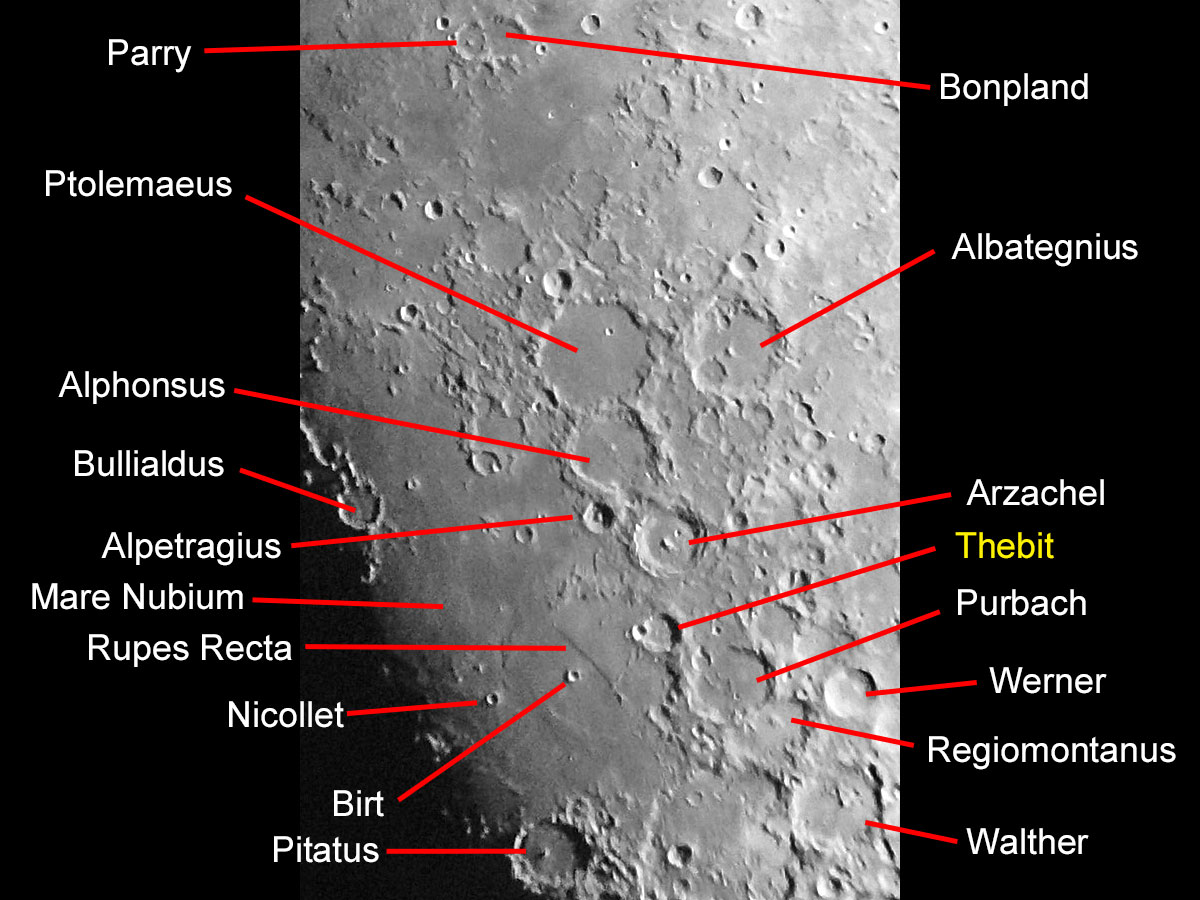 |
Photo data: March 25, 2018, Sky-Watcher Skymax-127 OTA, Sony RX100 M4 attached to the eyepiece
Theophilus
The ring mountains (crater) Theophilus has a diameter of 100 km and is 4100 m deep (Spix) or 101 km and 4400 m (VMA). It is the first in a chain of three craters called Theophilus, Cyrillus, and Catharina at the northwestern edge of Mare Nectaris (Sea of Nectar).
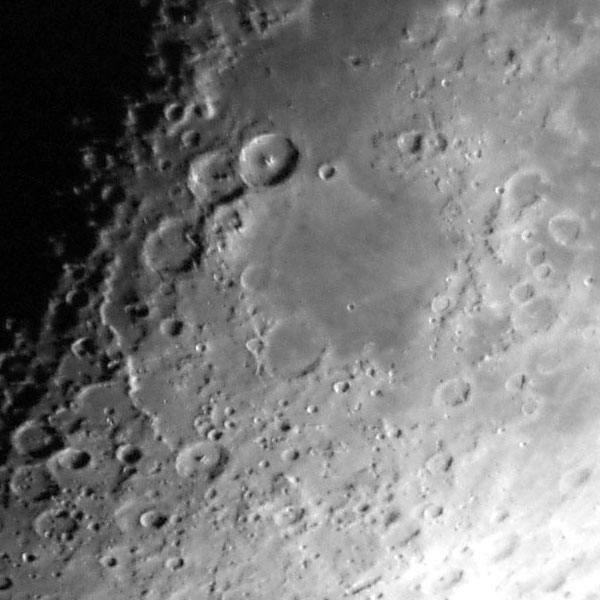 |
 |
|
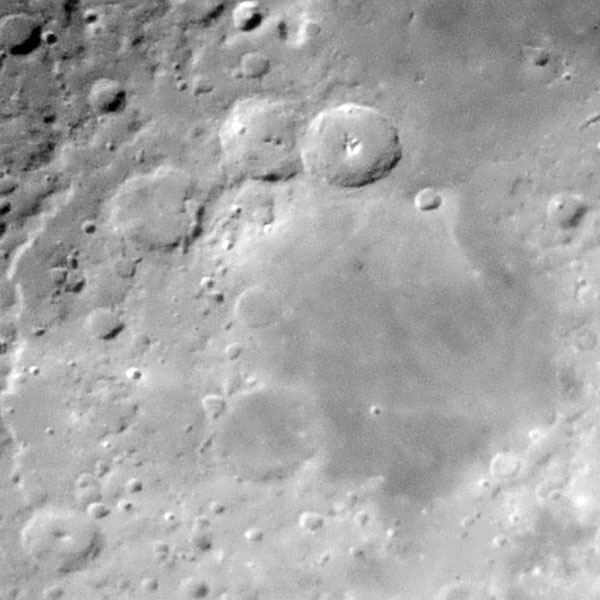 |
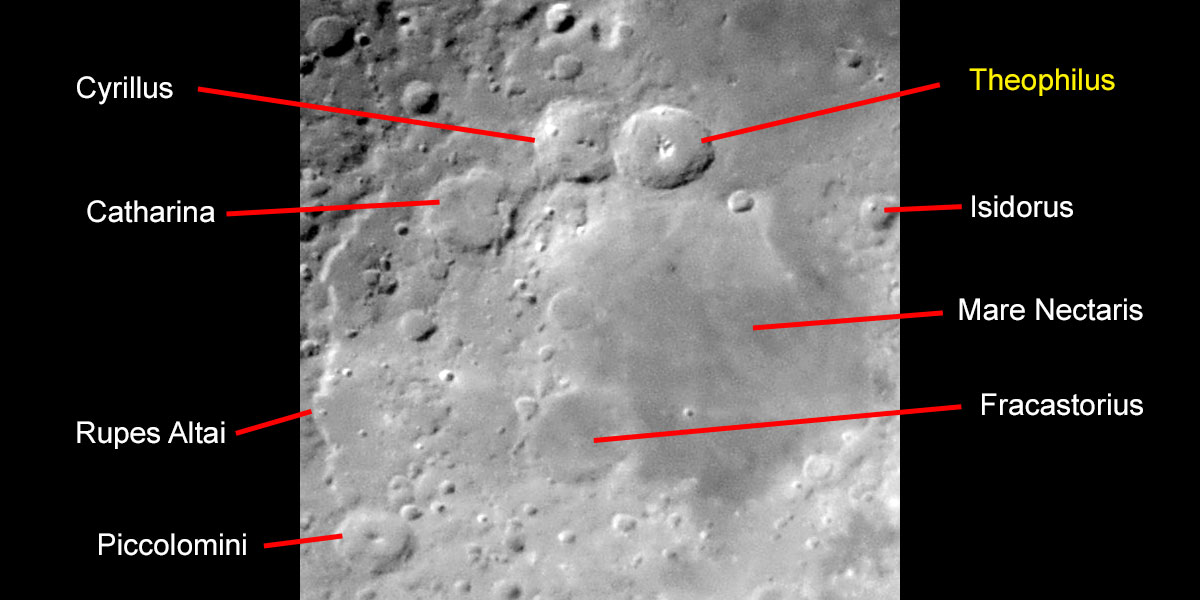 |
Photo data: April 2-3, 2017, Sky-Watcher Explorer 150PDS, Ricoh GR held to the 7 mm UWA eyepiece
Tranquilitatis, Mare (Sea of Tranquility)
Mare Tranquilitatis (Sea of Tranquility) has a diameter of 875 km (Spix) and has achieved a certain fame through the landing of Apollo 11 on the moon.
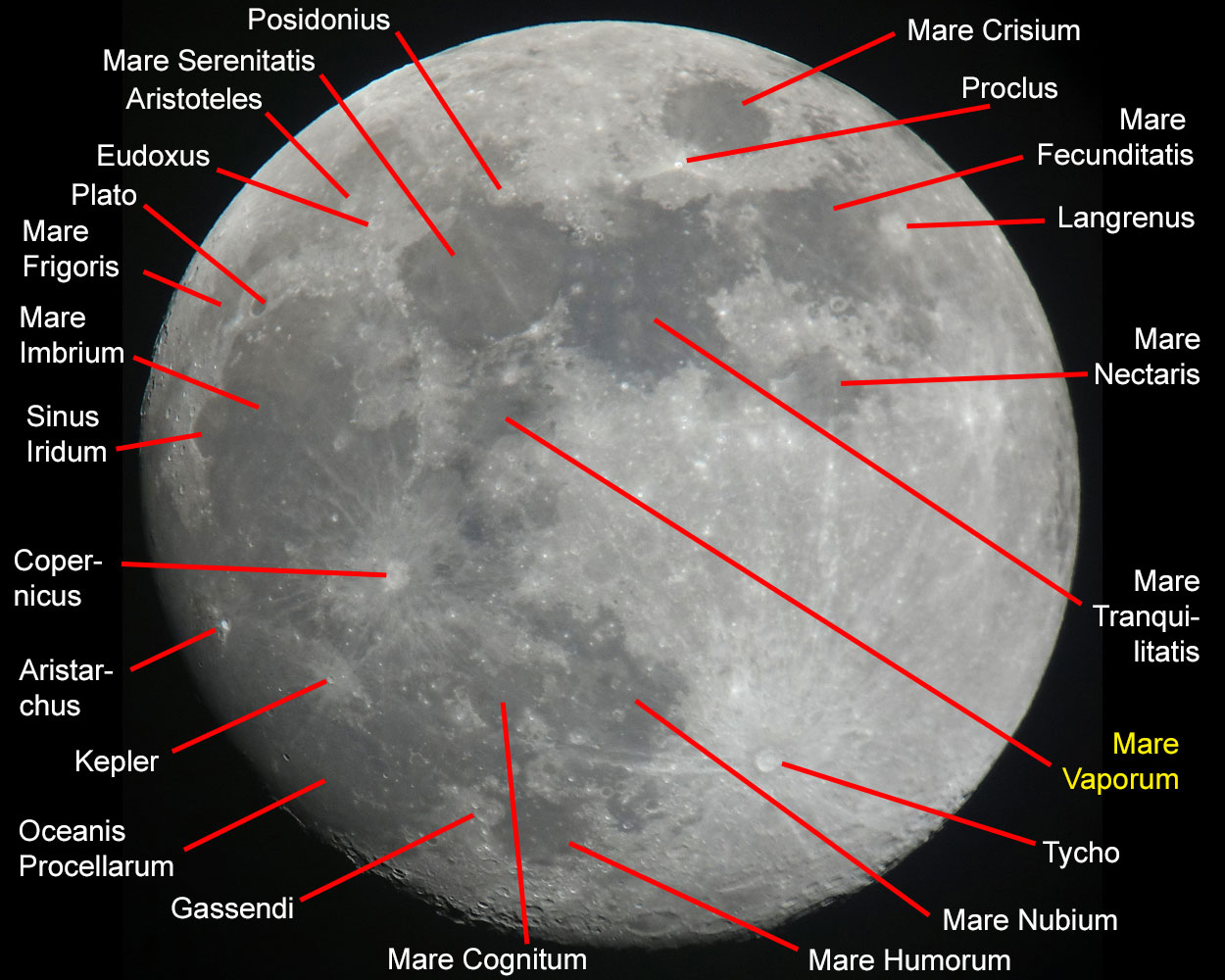 |
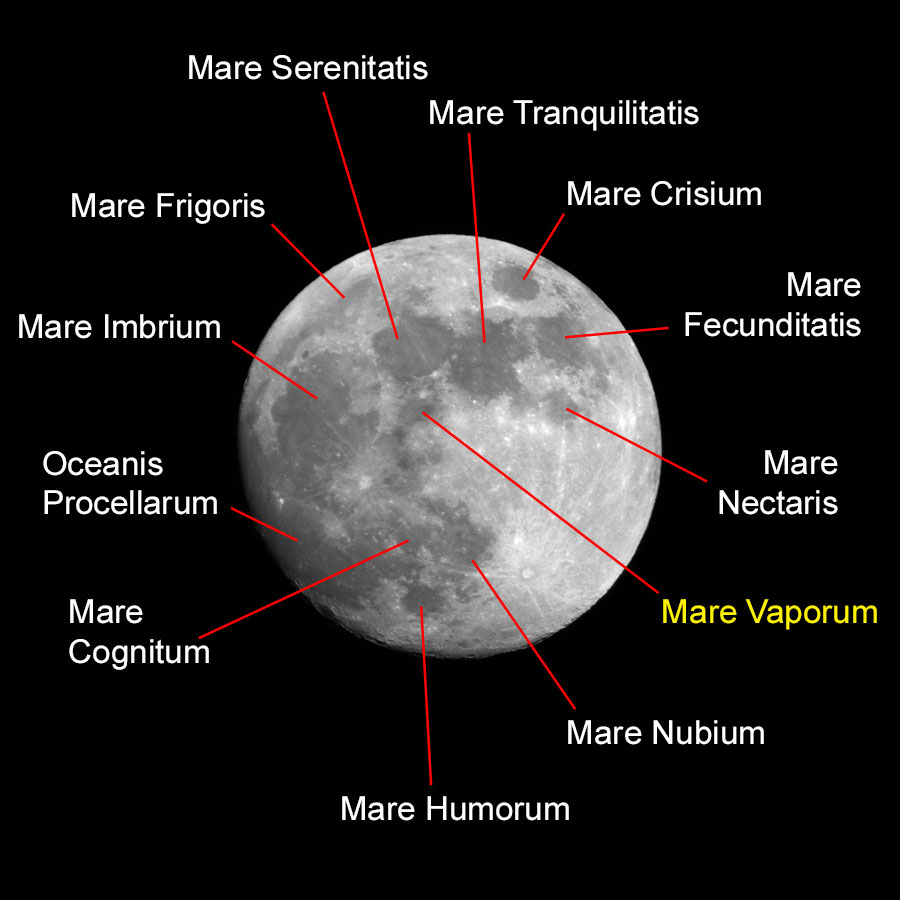 |
Photo data (left photo): March 29, 2018 (two days before Full Moon), Sky-Watcher
Skymax-127 OTA, Sony RX100 M4 attached to the 32 mm eyepiece
Photo data (right photo): February 28, 2010 (nearly Full Moon), Sky-Watcher
Skymax-127 OTA (probably), Leica X Vario (36 - 50 mm equiv.) held to a 32 mm
eyepiece (47 x)
Tycho
According to Spix, the crater Tycho is located at the center of what is probably the most spectacular ray system on the Moon. The crater has a diameter of 86 km and is 4700 m deep (Spix; 4800 m according to VMA).
Photo data: February 27, 2018, Sky-Watcher Skymax-102 OTA, Ricoh GR held to the eyepiece
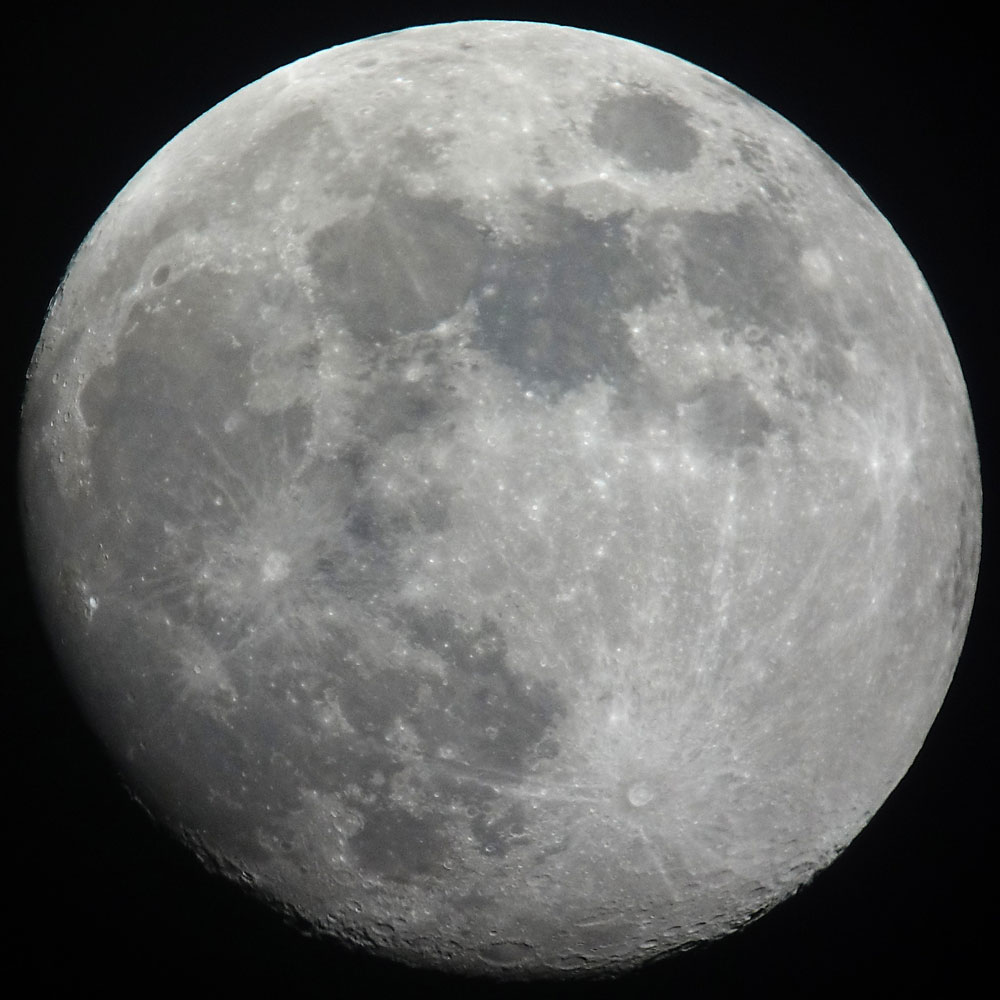 |
 |
Photo data: March 29, 2018 (two days before Full Moon), Sky-Watcher Skymax-127 OTA, Sony RX100 M4 attached to the 32 mm eyepiece
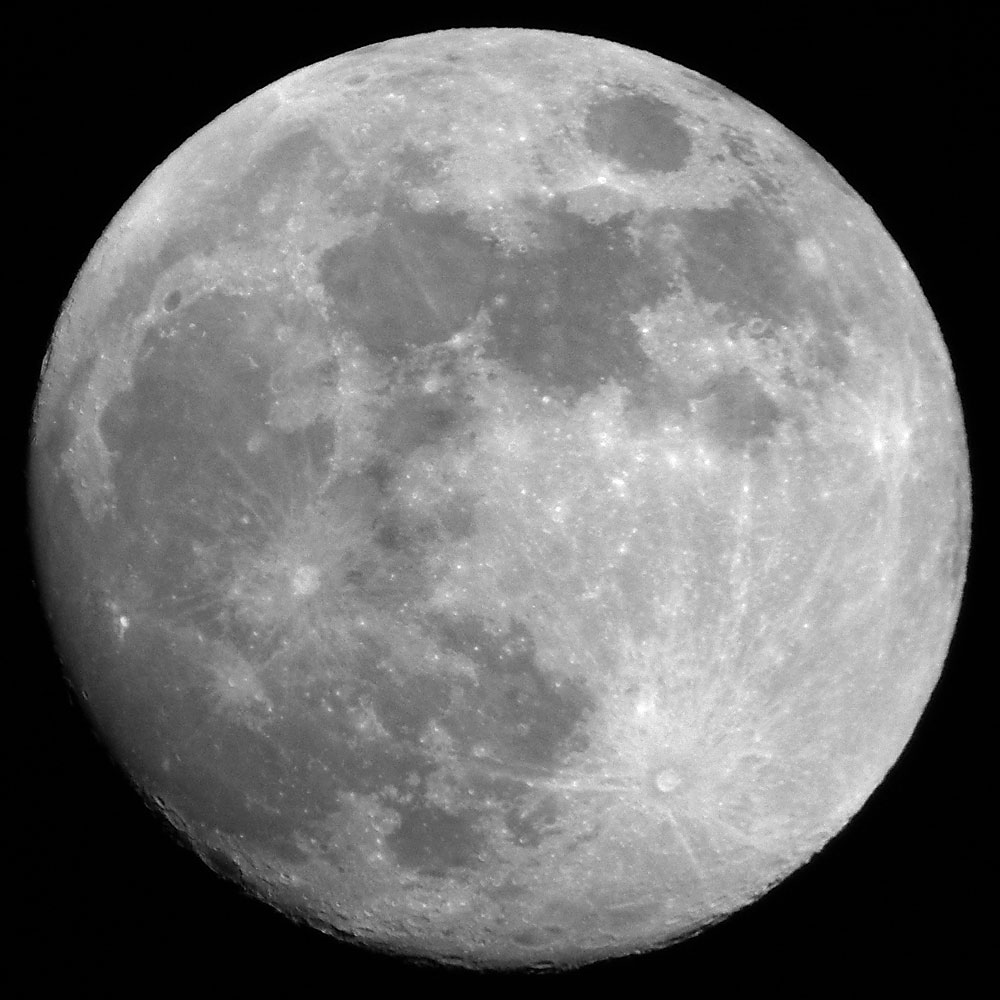 |
 |
Photo data: February 28, 2010 (nearly Full Moon), Sky-Watcher Skymax-127 OTA (probably), Leica X Vario (36 - 50 mm equiv.) held to a 32 mm eyepiece (47 x)
U
...
V
Vaporum, Mare (Sea of Vapors)
Mare Vaporum (Sea of Vapors) has a diameter of 245 km (Spix).
 |
 |
Photo data (left photo): March 29, 2018 (two days before Full Moon), Sky-Watcher
Skymax-127 OTA, Sony RX100 M4 attached to the 32 mm eyepiece
Photo data (right photo): February 28, 2010 (nearly Full Moon), Sky-Watcher
Skymax-127 OTA (probably), Leica X Vario (36 - 50 mm equiv.) held to a 32 mm
eyepiece (47 x)
Vendelinus
The walled plain Vendelinus has a diameter of 131 km and is 2200 m deep (S&G; 147 km according to VMA).
 |
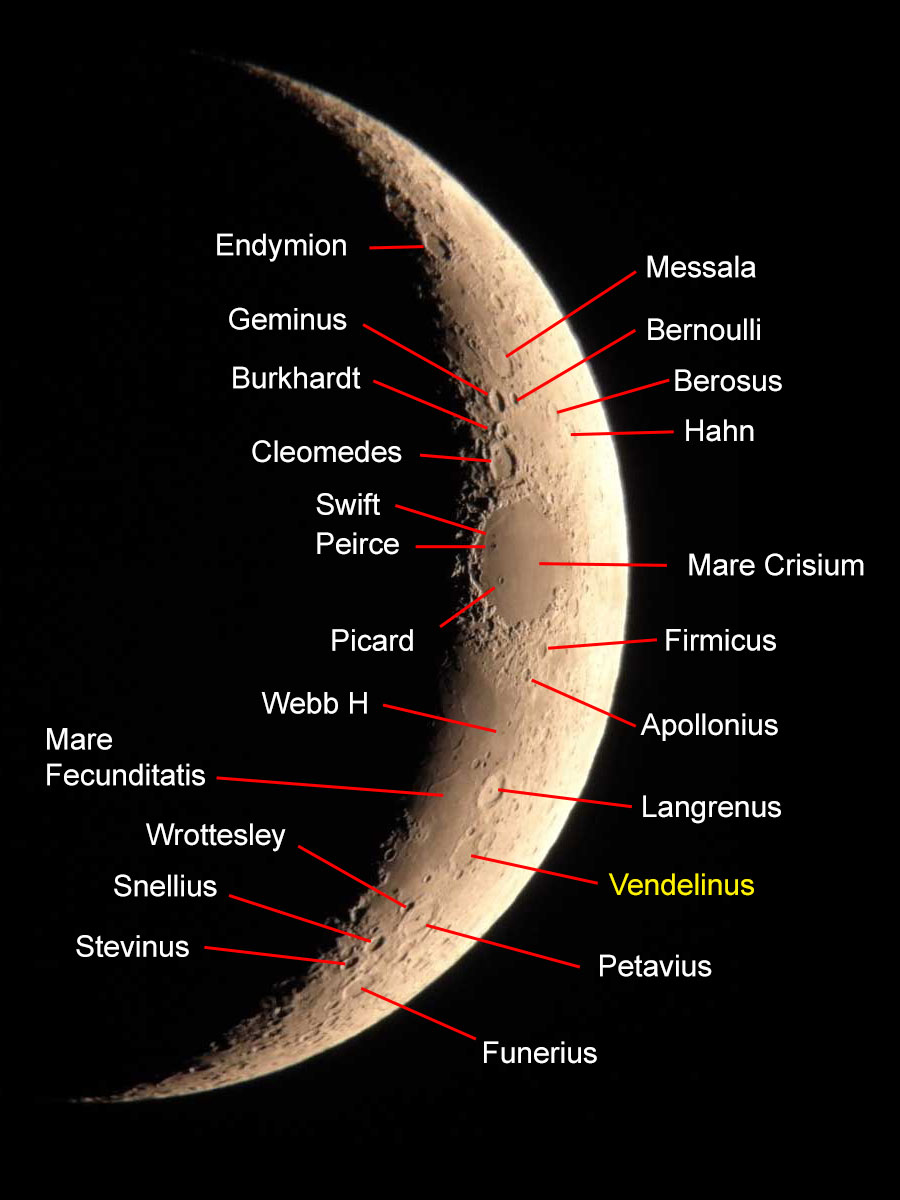 |
Photo data: April 10, 2016, GSO GSD 680 telescope, Leica X Vario mounted fix to 32 mm DigiScope eyepiece
W
Wallace
The crater Wallace at the eastern edge of the Mare Imbrium (Sea of Rain) has a diameter of 27 km, an irregular shape, and is filled with lava. For me, it is a "ghost crater," and this was verified by Wikipedia...
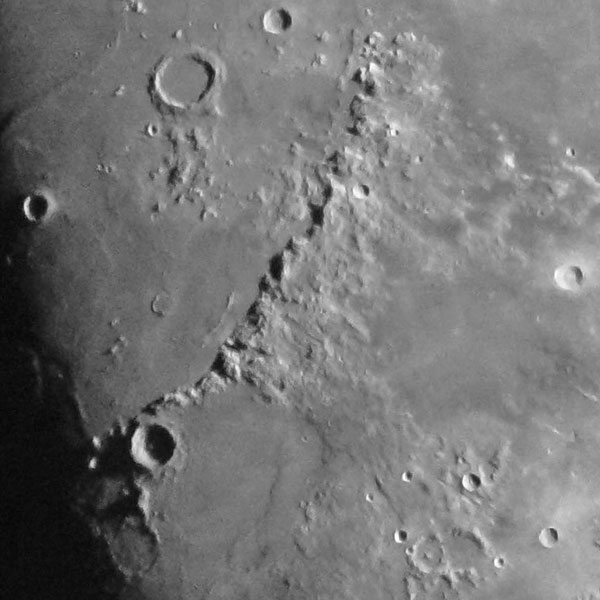 |
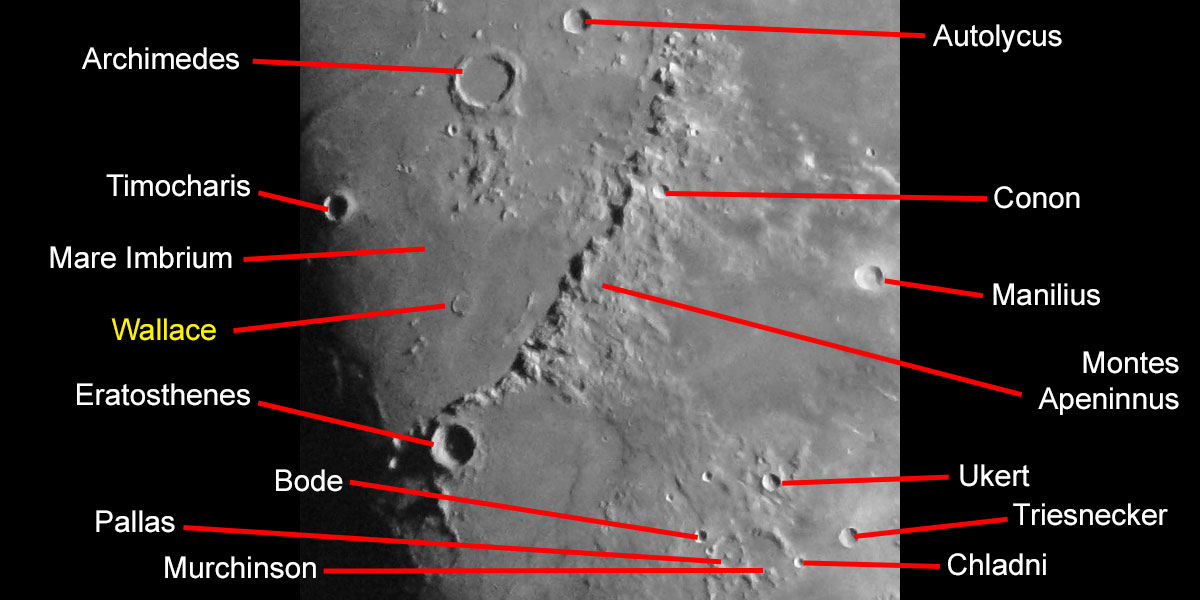 |
Photo data: March 25, 2018, Sky-Watcher Skymax-127 OTA, Sony RX100 M4 attached to the eyepiece
Walther
The walled plain Walther has a diameter of 141 km (VMA) and is located in the south of the moon.
 |
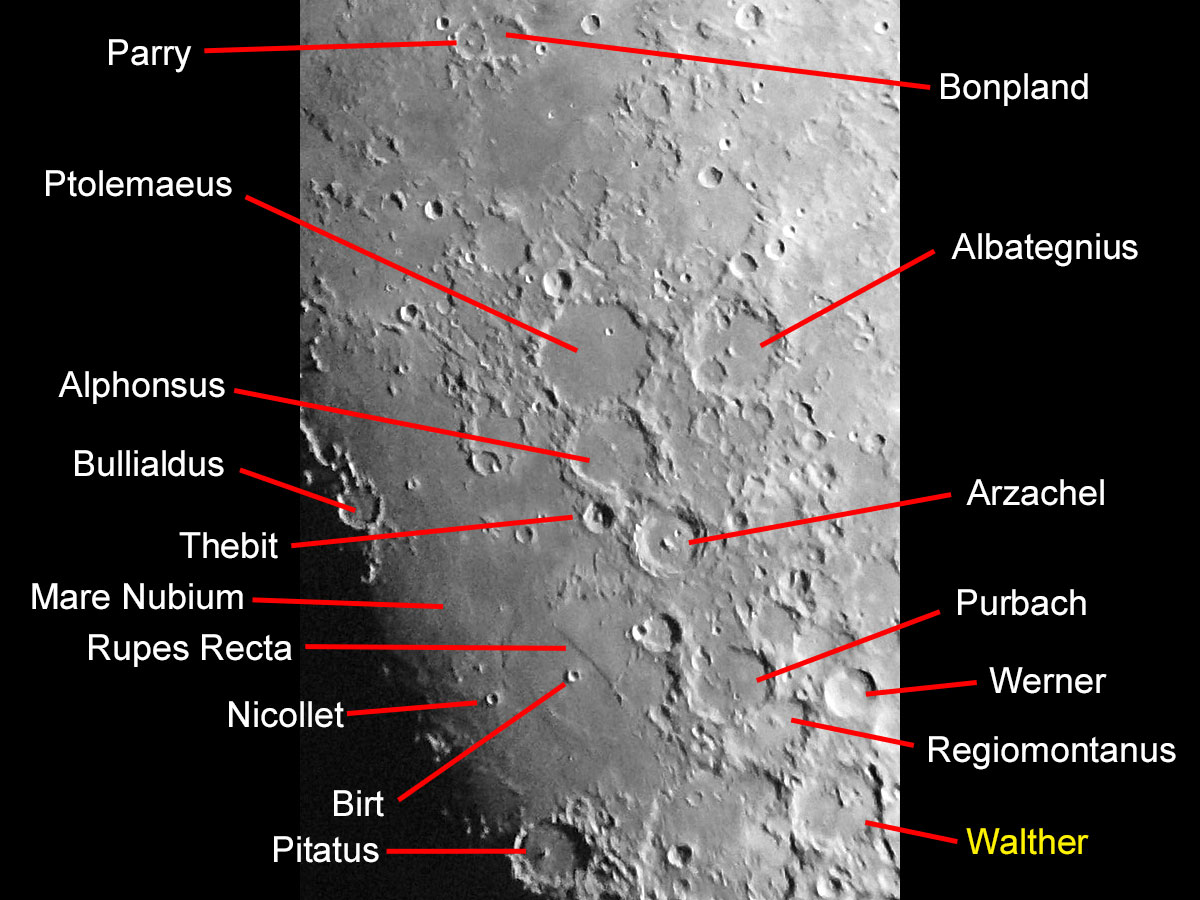 |
Photo data: March 25, 2018, Sky-Watcher Skymax-127 OTA, Sony RX100 M4 attached to the eyepiece
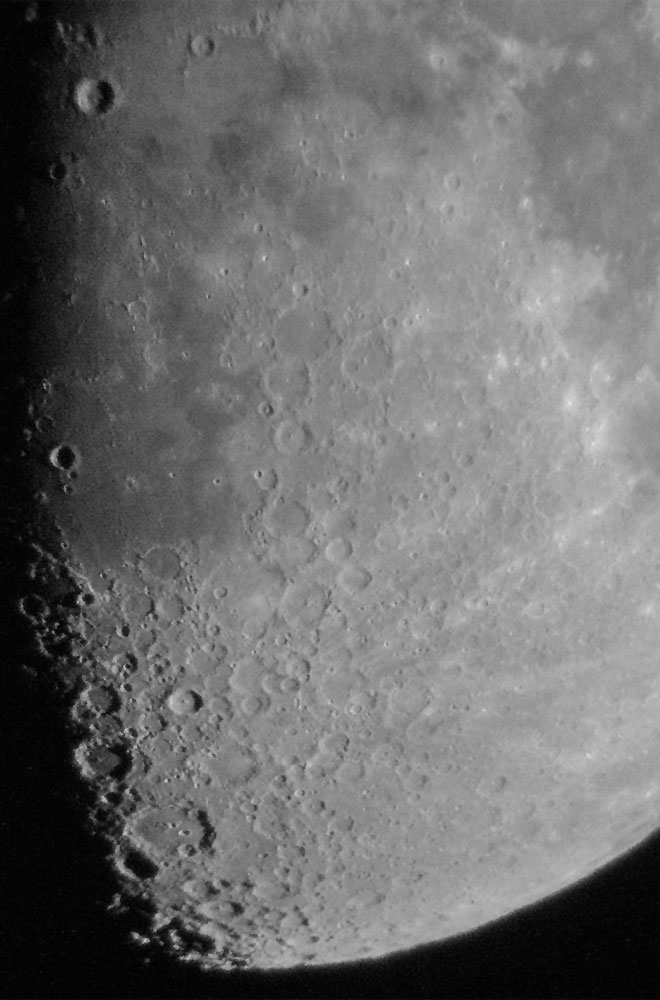 |
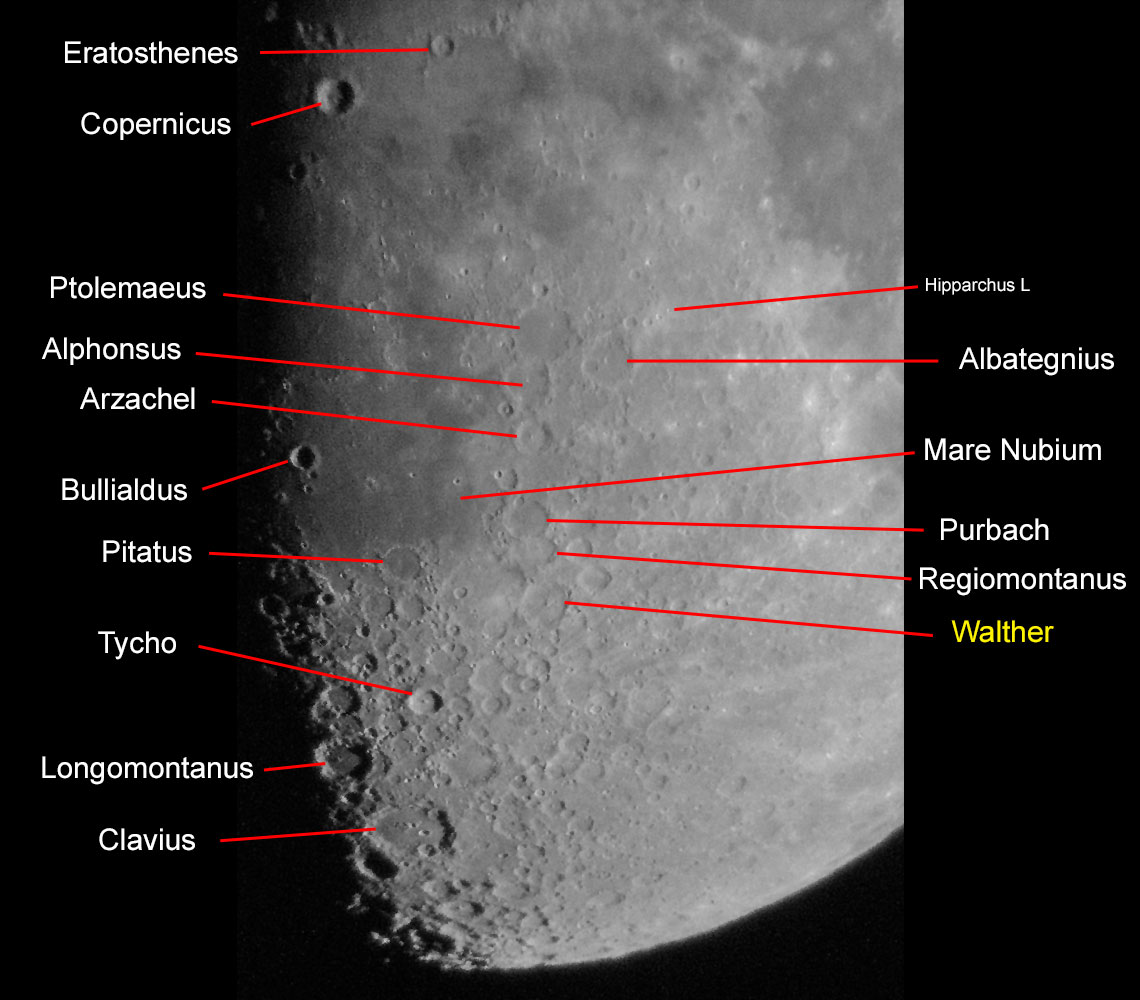 |
Photo data: July 2015, Sky-Watcher Heritage 100P telescope, Leica X Vario held to the 32 mm Digiscope eyepiece
Wrottesley (Crater)
The crater Wrottesley is located on the edge of the ring mountains Petavius and has a diameter of 57 km and is 4200 m deep (S&G; 58 km and 2300 m altitude according to VMA).
 |
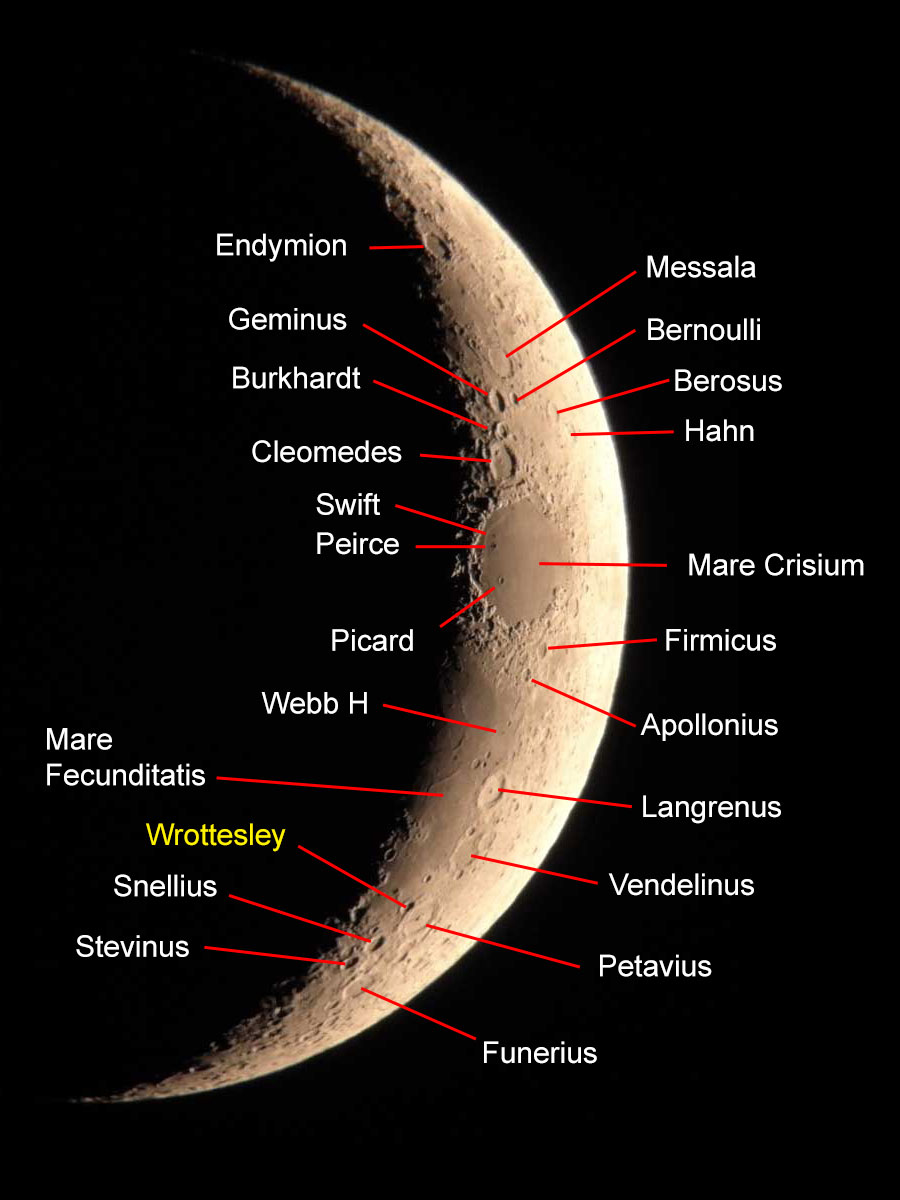 |
Photo data: April 10, 2016, GSO GSD 680 telescope, Leica X Vario mounted fix to 32 mm DigiScope eyepiece
X
...
Y
...
Z
...
References
- Mond (Wikipedia): de.wikipedia.org/wiki/Mond
- Moon (Wikipedia): en.wikipedia.org/wiki/Moon
- Lambert Spix (2013, 3. Auflage). moonscout - Mondmeere, Krater und Gebirge einfach finden und beobachten. Oculum-Verlag. ISBN 978-3-938469-58-3
- Lambert Spix & Frank Gasparini (2011, 1. Auflage). Der Moonhopper. Oculum-Verlag. ISBN 978-3-938469-54-5
- Ronald Stoyan, Hans-Georg Purucker (2013, 1. Auflage). Reiseatlas Mond. Oculum-Verlag. ISBN 978-3-938469-64-4
- Virtual Moon Atlas: ap-i.net/avl/en/start
| 15.12.2018 |
